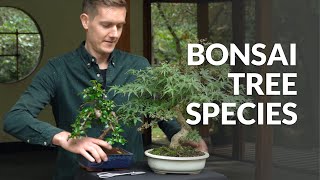Willow Bonsai Care guidelines
Willows prefer a sunny place during the growing season, but might need semi-shade during the hottest weeks. The weeping willow species need winter protection when they are planted in containers. A cold but frost-free greenhouse, garage or shed is a good winter place for a willow bonsai tree.
On hot summer days the willow needs huge amounts of water and must be watered several times a day. Never let the soil dry out. You can even place the pot in a shallow bowl filled with water during hot days, in order to avoid drought damage. Water less in winter but keep the rootball slightly moist. Continue reading about watering Bonsai trees.
Watering
Free lecture from the Beginners CourseApply solid organic fertilizer every six weeks or use a liquid fertilizer every two weeks during the growing season. Don't feed with high nitrogen which would cause large leaves, long internodes and increased susceptibility to insects.
In winter cut off excess shoots which have emerged from the trunk or in other unwanted positions. Shorten the remaining branches leaving only one or two buds in order to replace the long hanging twigs with new growth in the following year. In summer trim back the new shoots repeatedly. Wire new shoots beginning in June to bend them down in a hanging position. Take care to remove the wire in time so that it won't bite into the bark. Older branches can be pulled down with guy wires in spring. Continue reading about pruning Bonsai trees.
Willows have strongly growing roots which fill the bonsai pot very quickly. Therefore it can be necessary to repot willow bonsai every year when the buds begin to swell. You can prune the roots strongly to make room for new root growth. The soil should retain enough water but at the same time offer good drainage. As the willow prefers a slightly alkaline environment, you can add a little pumice or lime stone gravel to your soil mix. Continue reading about repotting Bonsai trees.
Willows are easily propagated from cuttings. They will even root in a glass of water. Even quite large and thick plant parts can produce roots.
Willow borer, aphids, scale, caterpillars, gall makers, gall mites, rust or canker can bother the willow bonsai. Use a specific pesticide and in severe cases ask a professional gardener for advice. For more detailed information on these techniques, check out our Bonsai tree care section.

Weeping willow bonsai tree

Leaves of the Weeping willow

Salix babylonica or Salix alba bonsai

Weeping willow bonsai
General information about the Weeping willow Bonsai tree
It has drooping branches and long yellowish twigs which hang down almost to the ground. It is native to China and is widespread in the northern hemisphere. The real Weeping willow is Salix babylonica but there are some varieties of other willow species which are very similar, like Salix alba 'Tristis' and Salix x sepulcralis 'Chrysocoma'.
The trees can grow 20 m (65ft) tall and become 80 to 200 years old when they grow under favorable circumstances. Willows like moist soil and often grow close to ponds, lakes and rivers. In spring, the silvery or yellow catkins give the weeping willow a very attractive appearance. The leaves are long and narrow. In autumn they turn golden yellow before they fall off.
Weeping willows can be beautiful bonsai but their care and styling is not particularly easy. They need a lot of water and their strong growth must be controlled. It is best to make larger willow bonsai because the hanging branches and leaves need enough room. The shoots need to be wired downwards all the time because they tend to grow upwards to reach the willow's genetically predetermined height. Willows sometimes lose branches which die for no apparent cause. If you need help identifying your tree, take a look at our Bonsai tree identification guide.



 Watch
Watch 


